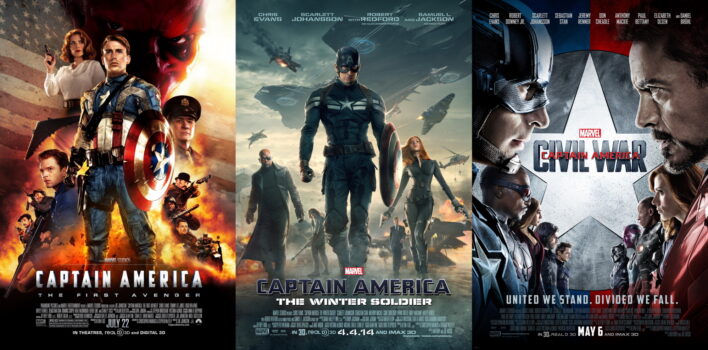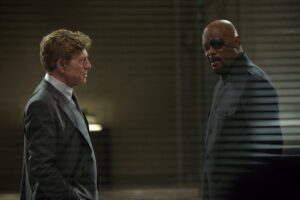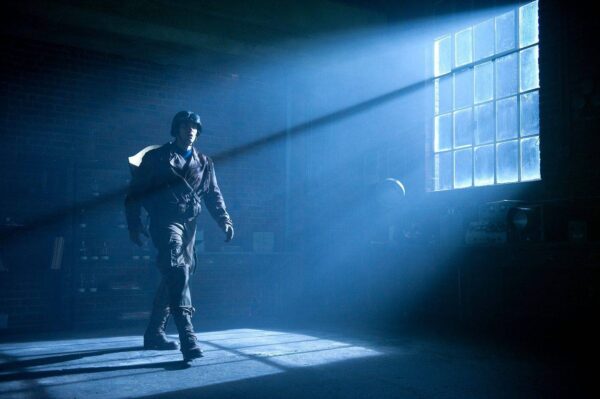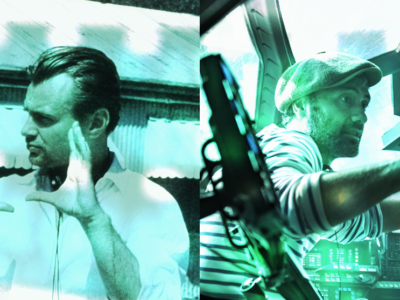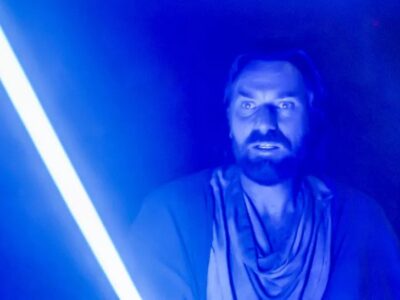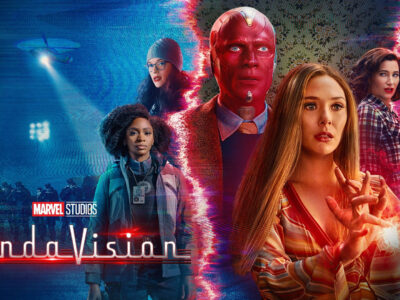10 Things That Make Perfect Sense About The Captain America Trilogy If You Actually Watch It
In three movies over nearly seven hours, Captain America is showcased at length, and if you actually watch the movies and think a little bit, every detail that matters makes total sense. Clickbait abounds, though, and a recent piece by CBR.com has been making the rounds to eye rolls from Marvel fans and gleeful agreement from Marvel mockers.
Well, we’re in the former category—in fact, we think that some of the “plot holes” CBR came up with are good things—so we’re here to grade CBR’s report and we’ve got plenty of red pens. Here we go:
10: Nobody Found Steve Rogers Before Now
With equipment available to scientists and divers that was able to discover the Titanic, it’s unlikely that nobody would have searched out and found the frozen super soldier in the ice in all those years.
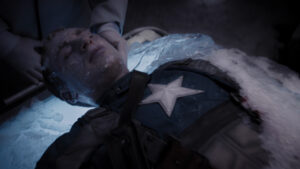 It took seventy years to find the Titanic, and people generally knew where it was because the rescue ships kept charts of their location. Before GPS positioning, when Cap’s plane went down, it could’ve landed pretty much anywhere. The Tesseract itself was easy to find, given its immense power radiation, but a single human being presumed dead in a broken-up plane at the bottom of the Arctic Ocean? Who would even pay for such a mission?
It took seventy years to find the Titanic, and people generally knew where it was because the rescue ships kept charts of their location. Before GPS positioning, when Cap’s plane went down, it could’ve landed pretty much anywhere. The Tesseract itself was easy to find, given its immense power radiation, but a single human being presumed dead in a broken-up plane at the bottom of the Arctic Ocean? Who would even pay for such a mission?
Well, Nick Fury would, but before him, who?
9: The Super-Soldier Serum Gives Steve Muscles And Height
It seems strange that the serum and the vita-rays make Steve super huge and beefy. Nobody’s complaining, as fans love Chris Evans, but still, it doesn’t make logical sense.
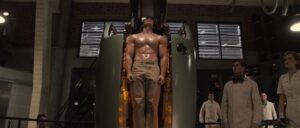 This is the point in the MCU where your suspension of disbelief breaks down? A guy makes a suit of cutting-edge armor in a cave with scraps, and this is the thing you can’t get past? A literal Norse god turns out to be not only real but still alive on another planet, but “human gets taller” doesn’t track for you?
This is the point in the MCU where your suspension of disbelief breaks down? A guy makes a suit of cutting-edge armor in a cave with scraps, and this is the thing you can’t get past? A literal Norse god turns out to be not only real but still alive on another planet, but “human gets taller” doesn’t track for you?
Ok, here’s the deal. Erskine’s formula was specifically designed to make a super soldier, and in order to do that you’re going to have to increase muscle mass. And decades later, when Bruce Banner was experimenting to try and duplicate Dr. Erskine’s work, his best attempt gamma ray bombardment ended up creating the Hulk. What’s his defining feature? He gets big when he gets angry. I rest my case.
8: Nick Fury Trusts Anyone
In The Winter Soldier, Nick Fury decides to entrust a decision to Alexander Pierce, who is the very person that will turn out to the movie’s villain.
I don’t think Fury had a choice. Pierce is a member of the World Security Council (the shadowy organization Fury defied in The Avengers about shooting a nuclear weapon at New York), and Fury’s personal friend. Nick Fury didn’t entrust anything to Pierce, he works for the guy.
In fandom, there are two different types of plot explanation: “Doylist” explanations (named after Sir Arthur Conan Doyle, real-world author of the Sherlock Holmes novels), which explain the real-world reason for a narrative choice; and “Watsonian” explanations (named after Dr. John Watson, the fictional chronicler of Sherlock Holmes’ exploits), which try to explain a narrative choice using the story’s internal logic. Here, the Doylist explanation is “so the movie would have a bad guy.” But the Watsonian explanation is just as compelling: we’ve all had bosses who do questionable things, bosses we thought we could trust, bosses we don’t agree with.
Just hopefully not ones that tried to kill every political dissident on Earth.
7: Steve Rogers Risks S.H.I.E.L.D. Secrets
Before Nick Fury — supposedly — dies, he gives Steve Rogers a flash drive that contains all the information he needs to know. Steve Rogers then hides this flash drive in a vending machine, of all places.
 Sure, expect perfect digital operational security from a guy who was born 82 years before the invention of flash drives. He was about to be taken into the belly of the beast, to the headquarters of the people he already suspected, and of his limited options, that isn’t the worst.
Sure, expect perfect digital operational security from a guy who was born 82 years before the invention of flash drives. He was about to be taken into the belly of the beast, to the headquarters of the people he already suspected, and of his limited options, that isn’t the worst.
But even more so, this isn’t a “thing that doesn’t make sense.” It’s not a plot hole, it’s just a character’s bad decision (probably the best decision he could’ve made at the time, but still not great). Characters make bad decisions, that’s what makes them relatable. Characters get put in impossible situations and have to choose the least-awful thing. That’s why we watch movies; if every character always made the most optimal choice, we wouldn’t connect with them and we wouldn’t watch movies.
6: Arnim Zola Exists At All
Steve Rogers and Bucky Barnes are men out of time, but people went to extreme scientific and medical lengths to keep them alive this long. However, Arnim Zola absolutely should not be alive, as he is not even technically alive.
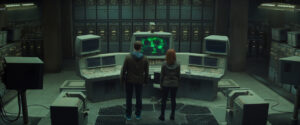 Well, they answered it. He’s not alive. Hey, that’s my job!
Well, they answered it. He’s not alive. Hey, that’s my job!
It’s awesome to watch kids deal with stories. They’re young, and they don’t quite have the mental experience to know all of the usual story tricks and tropes. Whatever happens on screen or on page, they truly believe it, because they’ve never had the rug pulled out from underneath them before. They don’t know that characters can die, or that characters who die have to stay dead.
Which is why I love superhero films; while there are still tricks and tropes, they have inherited from their comic book progenitors a little bit of chaos. Dead characters might not be completely dead forever! Things that happened might someday unhappen! Superhero films let us slip back into the wonder of watching a story as a child again, and experience what life was like before we knew all the tropes of modern storytelling.
5: Bucky Barnes Can Break Through HYDRA Brainwashing
Bucky Barnes, even while awake and brainwashed as the Winter Soldier, can continuously break through this brainwashing. […] There is a possible explanation here: Bucky Barnes’ relationship with Steve Rogers is stronger than HYDRA tech, but nothing else has ever been strong enough for him to do so.
 I mean, the movie is pretty obvious about how Bucky’s relationship with…oh. Oh, you already got there. So…why did you leave this point in the listicle?
I mean, the movie is pretty obvious about how Bucky’s relationship with…oh. Oh, you already got there. So…why did you leave this point in the listicle?
Humans are made for connection and relationship. From the moment we’re born and begin forming a bond with our parents, through childhood and its focus on friendship, and adolescence with its focus on romantic attachment, and adulthood and its focus on starting the cycle anew with more children, there’s nothing humans love more than relationship and connection with others, with themselves, with a Higher Power. It’s hardwired into us. No brainwashing can completely wipe it away.
So what else was going to break through?
4: Steve And Bucky Barnes Aren’t A Thing
The fact that Steve and Bucky aren’t together really doesn’t make sense. In The First Avenger, the two of them are closer than best friends, and Steve risks his life time and time again for Bucky.
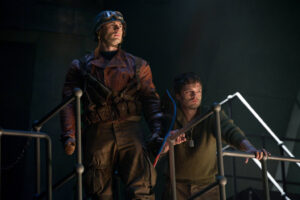 On the other hand, we have this. Look, just because your personal ship hasn’t sailed doesn’t mean that there’s a plot hole. People can be platonic friends and still have a remarkably close relationship. There isn’t any evidence in any story that either Barnes or Rogers has homosexual preferences, and it isn’t necessary for sex to be involved for friends to be immensely close to one another.
On the other hand, we have this. Look, just because your personal ship hasn’t sailed doesn’t mean that there’s a plot hole. People can be platonic friends and still have a remarkably close relationship. There isn’t any evidence in any story that either Barnes or Rogers has homosexual preferences, and it isn’t necessary for sex to be involved for friends to be immensely close to one another.
And hey, let’s be honest. This is almost exclusively a problem in a modern Western culture, and mostly with men. Why? Because we’ve given up the beautiful art of platonic friendship. By worshiping at the altar of John Wayne and his detached, aloof, scowling visage, we ignore a wealth of evidence throughout human history that men can be friends and left intimacy with other men as something that only women and people in the LGBTQ community can experience.
Seeing examples of platonic friendship, like Steve and Bucky, is helping undo that harmful misconception and bring back a beautiful way to be close friends and Nazi punchers at the same time.
3: The Twins Aren’t Mutants
As the X-Men and the concept of mutants were not within the [Marvel Cinematic Universe]’s rights when they decided to introduce [Wanda and Pietro Maximoff], they just aren’t mutants. Instead, they’re experiments. This misstep will be a fumble that the MCU will have to dance around for many years to come.
 Agent Phil Coulson’s existence isn’t a “misstep.” Spider-Man’s absence from the Avengers until Civil War isn’t a “misstep.” Thanos’ different motivations in the film aren’t a “misstep.” Things are different in the MCU than they are in the comics, and that is a good thing; it’s not a misstep, and story constrictions make for more imaginative tales.
Agent Phil Coulson’s existence isn’t a “misstep.” Spider-Man’s absence from the Avengers until Civil War isn’t a “misstep.” Thanos’ different motivations in the film aren’t a “misstep.” Things are different in the MCU than they are in the comics, and that is a good thing; it’s not a misstep, and story constrictions make for more imaginative tales.
At this point, CBR’s “things that don’t make sense” are just gripes about things they don’t like, but I can’t deny that there are tons of comic book fans who wish the movies were more like the comics. Length issues aside, though, that’s just not possible. Movies do different things than any other form of storytelling, and if you use a comic book as a script without adaptation, it wouldn’t be any good at all; the sources of empathy and experience of identifying with characters in a story are completely different.
Sure, making the Maximoffs into the product of an experiment diverges from the books (though not as much as this listicle would have you believe). But it provides an opportunity for the Scarlet Witch and Quicksilver to live on their own; to have new experiences that don’t tie the twins to Magneto, to tell a story that a connection with the X-Men would make muddy and unclear. Not to mention, I have a feeling that Wanda’s MCU lineage is going to come up in WandaVision, and that show is in no way a “misstep.”
2: The Third Movie Isn’t A Captain America Movie
The argument can be made that the plot focuses more heavily on Cap, but even Iron Man gets huge character moments and long defining sequences in the film.
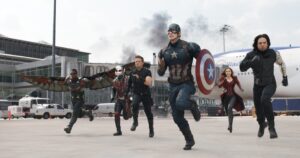 Again, this is CBR complaining, not pointing out plot holes. This might be a “title hole,” but it has nothing to do with the plot. And even that is specifically chosen; we’re clearly meant to side with Cap and empathize with Tony, and the subsequent films prove it.
Again, this is CBR complaining, not pointing out plot holes. This might be a “title hole,” but it has nothing to do with the plot. And even that is specifically chosen; we’re clearly meant to side with Cap and empathize with Tony, and the subsequent films prove it.
Actually, I’d contend that it’s the most “Captain America” movie possible. Steve Rogers’ entire purpose has always been helping others; since his first appearance, he’s been trying to benefit other people, even when it’s inconvenient for him (or almost literally kills him). And that works itself out on a meta level, too; in Civil War, his presence benefits Tony’s story. It’s every inch what he would do.
1: Bucky Barnes Goes Back On Ice
At the end of Civil War, Bucky has been granted asylum in Wakanda, willingly going back on ice until the technology is developed to break his brainwashing. He’s in a healthier cryogenic sleep than he’s ever been in before, but it seems highly unlikely that Steve and Bucky would make this decision after the everything they’ve both been through before this.
 One more gripe from CBR. This one is interesting, though, because I’d like to know why they don’t think this jibes with Bucky’s and Steve’s established character; they both have shown themselves to be willing to do whatever it takes, to risk their own well-being and happiness to help others. With Bucky a risk to someone’s life pretty much anytime he’s awake, what else would you do but go back into stasis until your brain can be fixed? That’s not a guess, it’s made explicit in the film: “I can’t trust my own mind,” he says. “So until they figure out how to get this stuff out of my head, I think going back under is the best thing.”
One more gripe from CBR. This one is interesting, though, because I’d like to know why they don’t think this jibes with Bucky’s and Steve’s established character; they both have shown themselves to be willing to do whatever it takes, to risk their own well-being and happiness to help others. With Bucky a risk to someone’s life pretty much anytime he’s awake, what else would you do but go back into stasis until your brain can be fixed? That’s not a guess, it’s made explicit in the film: “I can’t trust my own mind,” he says. “So until they figure out how to get this stuff out of my head, I think going back under is the best thing.”
And it works; Bucky is out again two years later, in the post-credits sequence of Black Panther, brain freshly unwashed, having successfully killed no one.
In a way, this is Bucky’s true resurrection; not when he was recovered by HYDRA, not when he was awoken by his memories of Steve, but when all traces of the evil in his mind were swept away. Before that moment, he lived in the “already-but-not-yet” of having an awareness of his sin, and some ability to fight it; but Wakanda made him into a new creation, able to think his own thoughts and do good for the first time since the fall.
That sounds pretty familiar, doesn’t it?
• &Bull; •
So, overall, I think the Captain America films hold together pretty well using their own internal logic. What do you think about our Watsonian explanations for CBR’s Doylist complaints? What plot holes did you see in the Captain America story? How do you think WandaVision and the upcoming Falcon & The Winter Soldier series will address these issues? Let us know in the comments, or over on the Facebook discussion group. We’ll be there for you.
To the end of the line.


